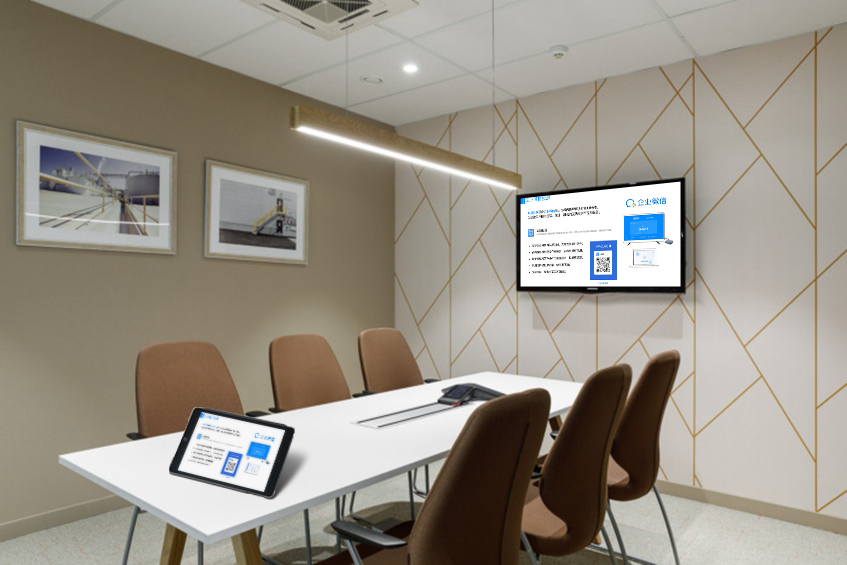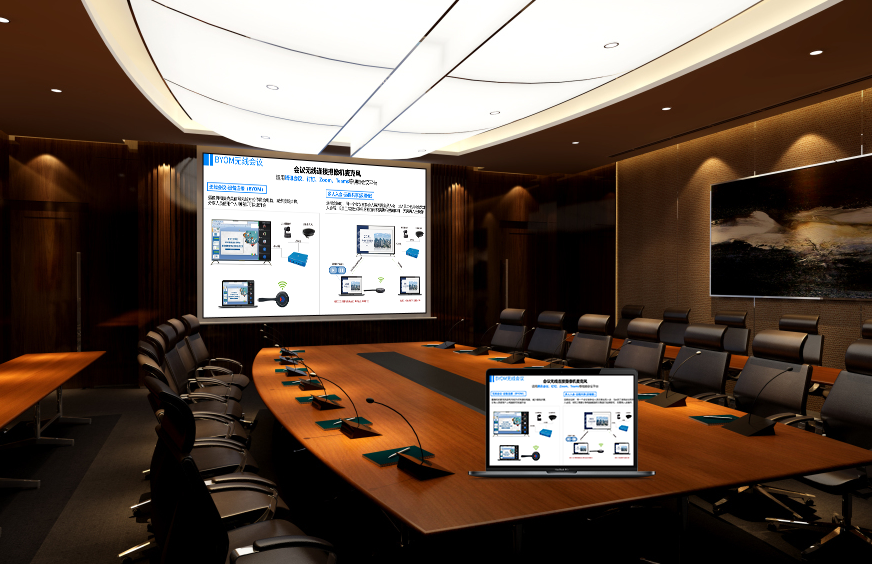AirPlay: Unleashing the Freedom of Apple Device Content
AirPlay, a wireless transmission technology within the Apple ecosystem, breaks down the connection barriers between iPhones, iPads, Macs, and large displays. It enables the seamless wireless flow of content like photos, videos, music, and documents. With its simple operation and stable performance, it injects convenience into office, entertainment, and education scenarios.
I. Zero-Barrier Connection: One-Click Content Mirroring
(I) Simple Pairing Process
Apple device users don’t need complicated setups. Simply pull down the Control Center or the menu bar and tap the “Screen Mirroring” or “AirPlay” icon. The system will automatically search for compatible large displays (such as TVs, projectors, and speakers) on the same network. After selecting the target device, the connection is complete in 3 seconds. Videos from your phone, courseware from your tablet, or documents from your computer instantly appear on the big screen. Even first-time users can master the operation in under a minute. Sharing travel videos at a family gathering or playing a photo slideshow at a birthday party can be done without learning technical skills.
(II) Seamless Switching Between Devices
AirPlay supports multiple Apple devices taking turns mirroring their screens, with no delay or black screens during the switch. In a meeting room, live data captured by an iPhone can be mirrored to the large display, and an analysis report from a MacBook can seamlessly follow. In a classroom, the teacher’s iPad courseware and a student’s iPhone homework can be displayed alternately, keeping the class pace tight and fluid. When a device that has been disconnected reconnects, the system automatically remembers the previous device, allowing for quick pairing with just a tap and avoiding the hassle of repeated searching.
II. High-Definition and Stable Transmission for Authentic Content
(I) Immersive Audio-Visual Synchronization
AirPlay supports 1080P Full HD video transmission, with some devices even capable of 4K output. Image details are sharp and clear, and color reproduction is identical to the native display. When playing a 4K movie, the actors’ subtle expressions and the scene’s lighting look incredibly lifelike on the big screen. When displaying design drawings, line thickness and color gradients are rendered precisely, meeting professional design review needs. Furthermore, audio transmission supports lossless quality. When connected to speakers, the live feeling of a concert and the clarity of a speech’s vocals are comparable to a wired connection. With audio-visual synchronization error controlled within 20ms, there’s no awkward lip-sync mismatch when watching movies or shows.
(II) Stable, Anti-Interference Connection
AirPlay uses Apple’s self-developed wireless transmission protocol to maintain a stable connection even when multiple devices are connected or network signals fluctuate. In a home, multiple iPhones can simultaneously connect to the TV to play different video clips without lag. In an office, a MacBook can mirror a presentation, and even if someone is Browse the web on an iPad, the stability of the content on the main screen remains unaffected, preventing interruptions during important meetings.
III. Features for Multiple Scenarios to Unlock Collaborative Value
(I) Office Scenarios: An Invisible Bridge for Efficient Collaboration
- Mobile Office: A business professional can film a client’s on-site needs with their iPhone, use AirPlay to mirror it to a portable projector, and discuss the plan with the team in real-time. A PPT from a MacBook can be mirrored to a large conference display via AirPlay, and an iPad can be used as a trackpad to remotely flip pages and annotate key points, freeing the presenter from being tethered to their computer.
- Remote Meetings: When working from home, an iPhone’s front-facing camera can be mirrored via AirPlay to the company’s large display, so attendees can clearly see the speaker’s expressions. A document shared from a MacBook and real-time annotations from an iPhone can be displayed in a split-screen on the large display, making remote collaboration feel like a face-to-face discussion.
(II) Entertainment Scenarios: A Warm Link for Family Sharing
- Home Viewing: On the weekend, you can select a movie on your iPad, mirror it to the TV with AirPlay, and then exit the mirroring interface on your phone to check messages or reply to emails without interrupting the playback on the big screen. For multi-player games, an iPhone can act as a controller, with the game screen mirrored to the TV via AirPlay, doubling the fun of competing on the same screen.
- Music Sharing: A playlist on your iPhone can be mirrored to your home speakers via AirPlay. Music can seamlessly fill the whole house while you’re cooking in the kitchen or having a party in the living room. You can also use an iPad to remotely switch songs without needing to walk over to the device.
(III) Educational Scenarios: An Efficient Tool for Interactive Classrooms
- Courseware Presentation: A teacher’s dynamic courseware created on a MacBook can be mirrored to the classroom’s large display via AirPlay. Key content can be annotated with handwritten notes on an iPad, with the annotations displayed simultaneously on the main screen for students to see more clearly. In a lab class, a live microscope view from an iPhone can be mirrored in real-time, allowing the entire class to observe cell changes together, avoiding the inefficiency of students taking turns to look.
- Student Interaction: A student’s completed assignment on an iPad can be mirrored via AirPlay to a group screen for discussion. The teacher can remotely pull up excellent work from an iPhone and mirror it to the main screen for review, boosting classroom participation by 60%.
IV. Ecosystem Synergy, Integrated into the Daily Lives of Apple Users
AirPlay is deeply integrated into the Apple ecosystem, seamlessly connecting with iOS, iPadOS, and macOS. It supports the “Universal Control” feature, allowing you to use a MacBook’s mouse and keyboard to control a mirrored iPad. You can edit a document on your computer while annotating mirrored content on your tablet, making multi-device collaboration feel like operating a single terminal. For users with a full suite of Apple products, AirPlay is more than just a mirroring tool; it’s an “invisible data cable” between devices like iPhone, iPad, Mac, and Apple TV, allowing content to flow freely and enabling the flexible experience of “creating on one device, presenting on another.”
With its simple operation, stable performance, and ecosystem synergy, AirPlay allows content from Apple devices to break free from screen size limitations and deliver greater value on a large display. Whether for efficient collaboration at work or warm sharing at home, it makes every content transfer simple, smooth, and enjoyable, becoming an indispensable wireless connection assistant for Apple users.